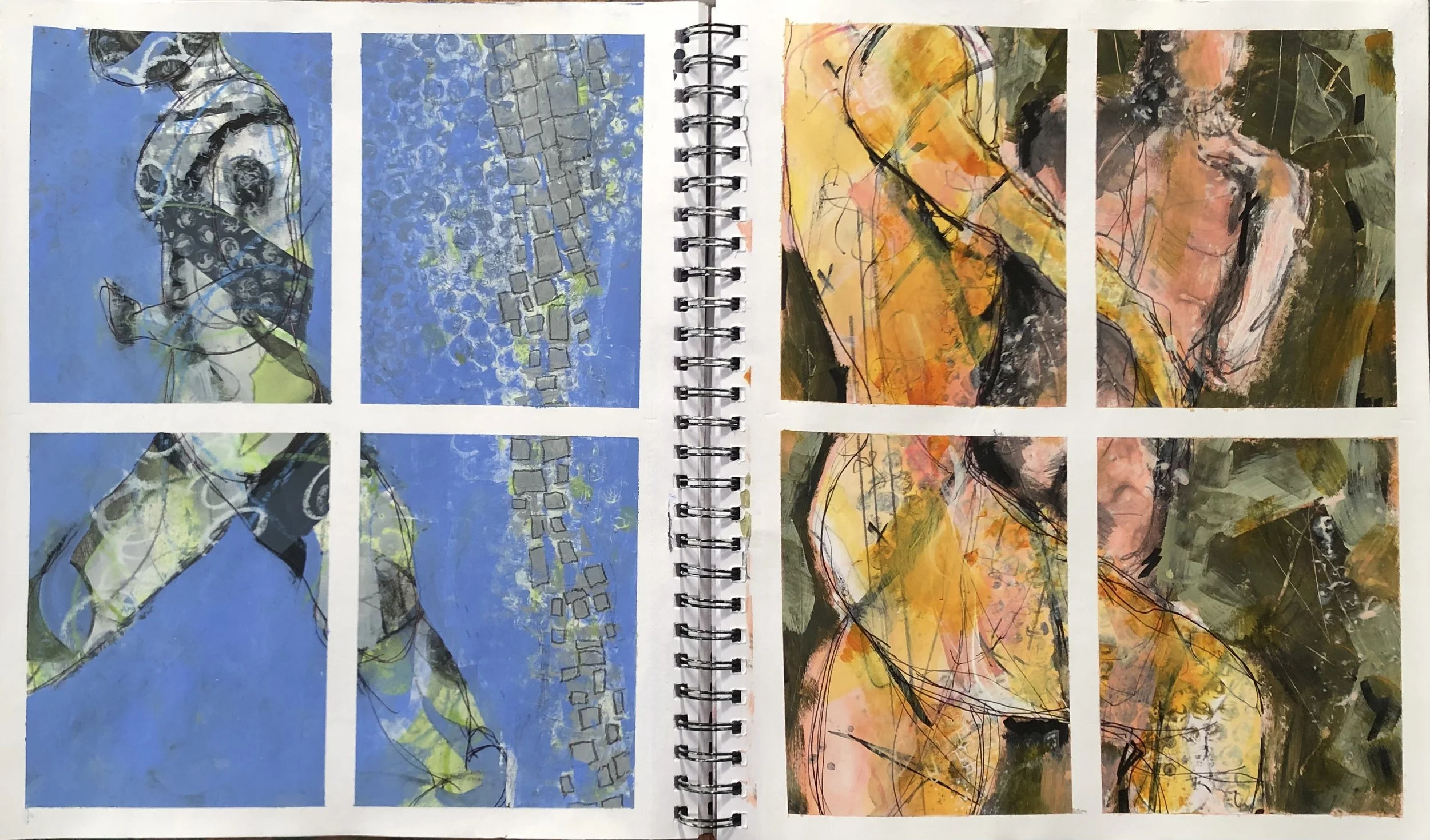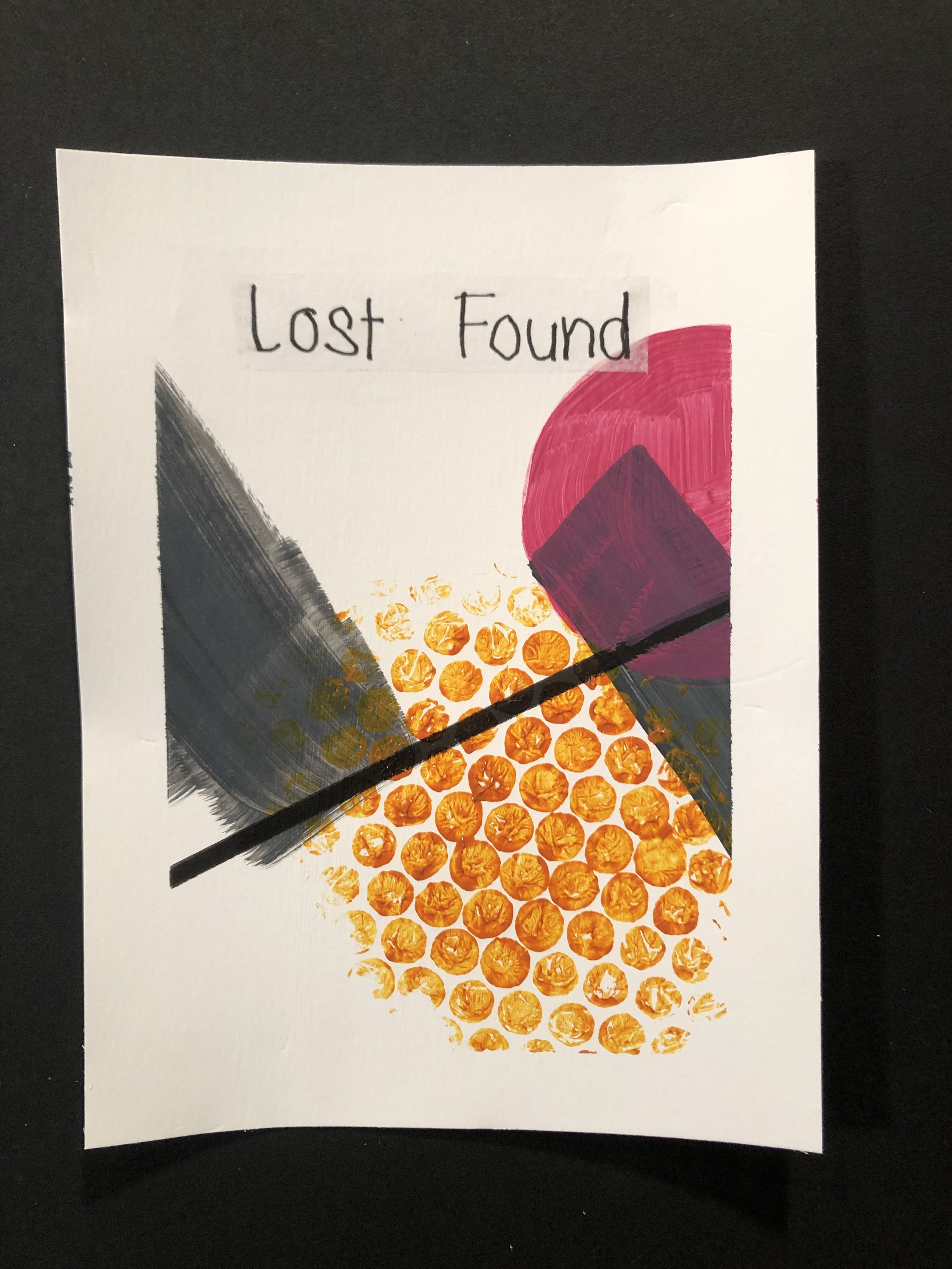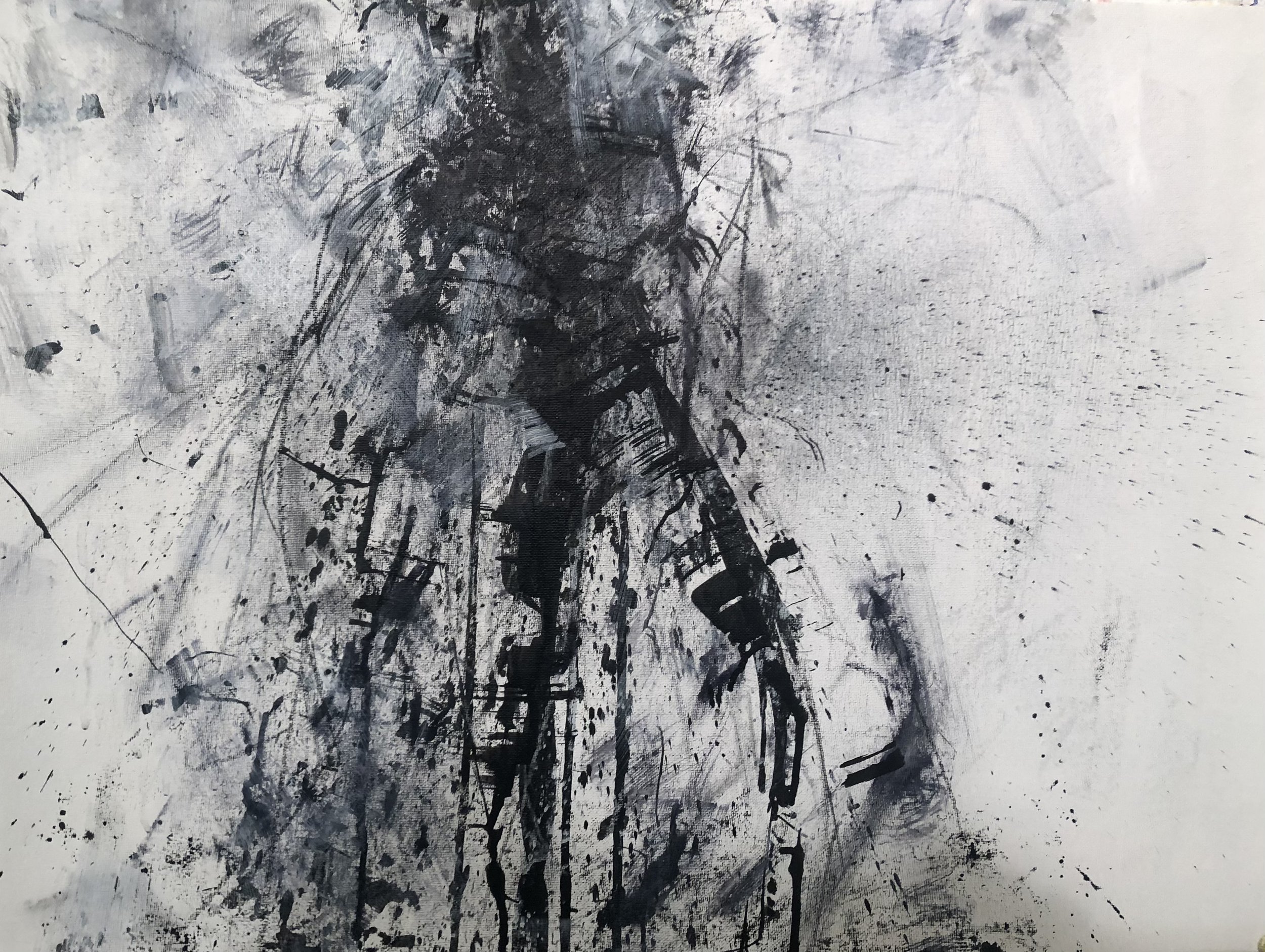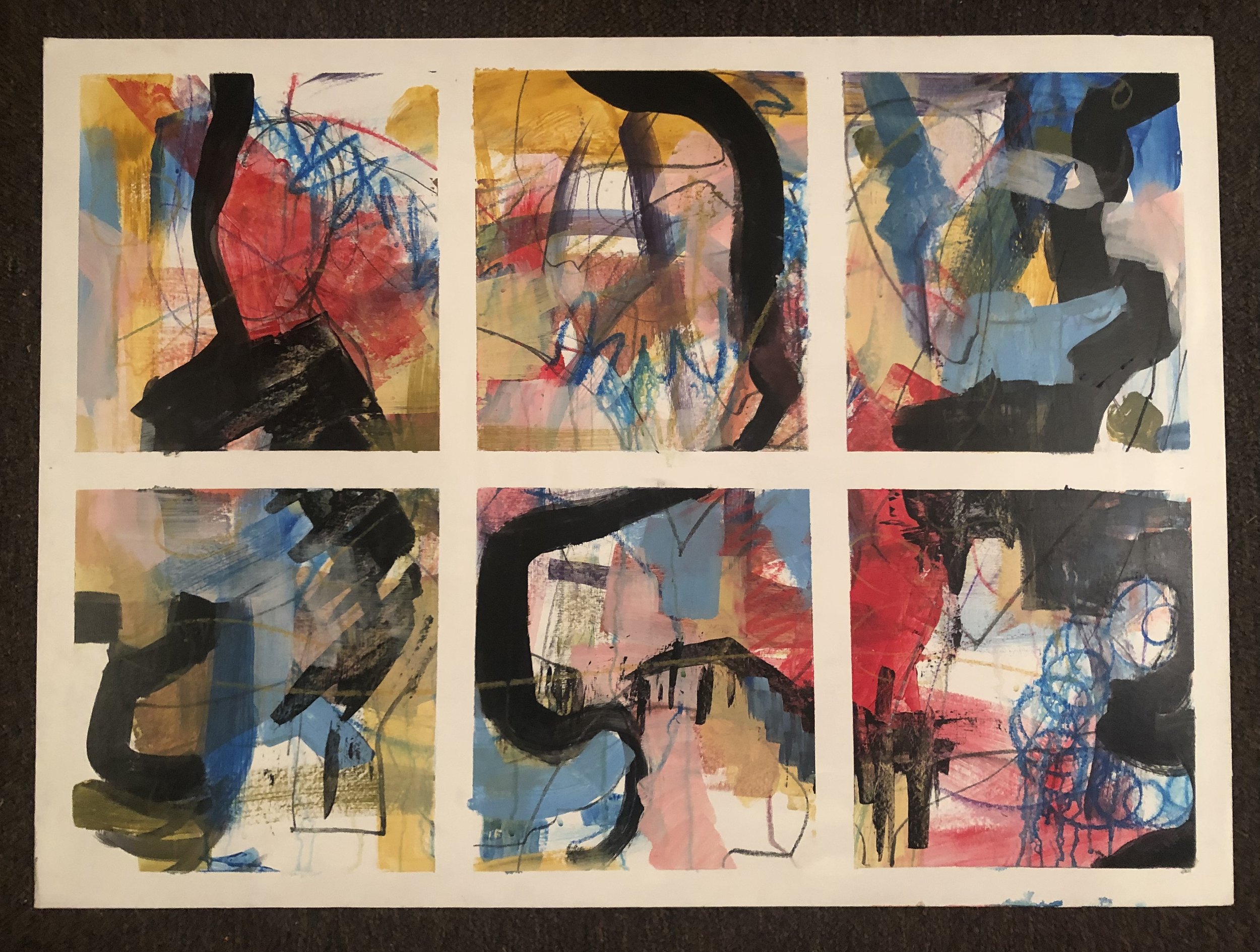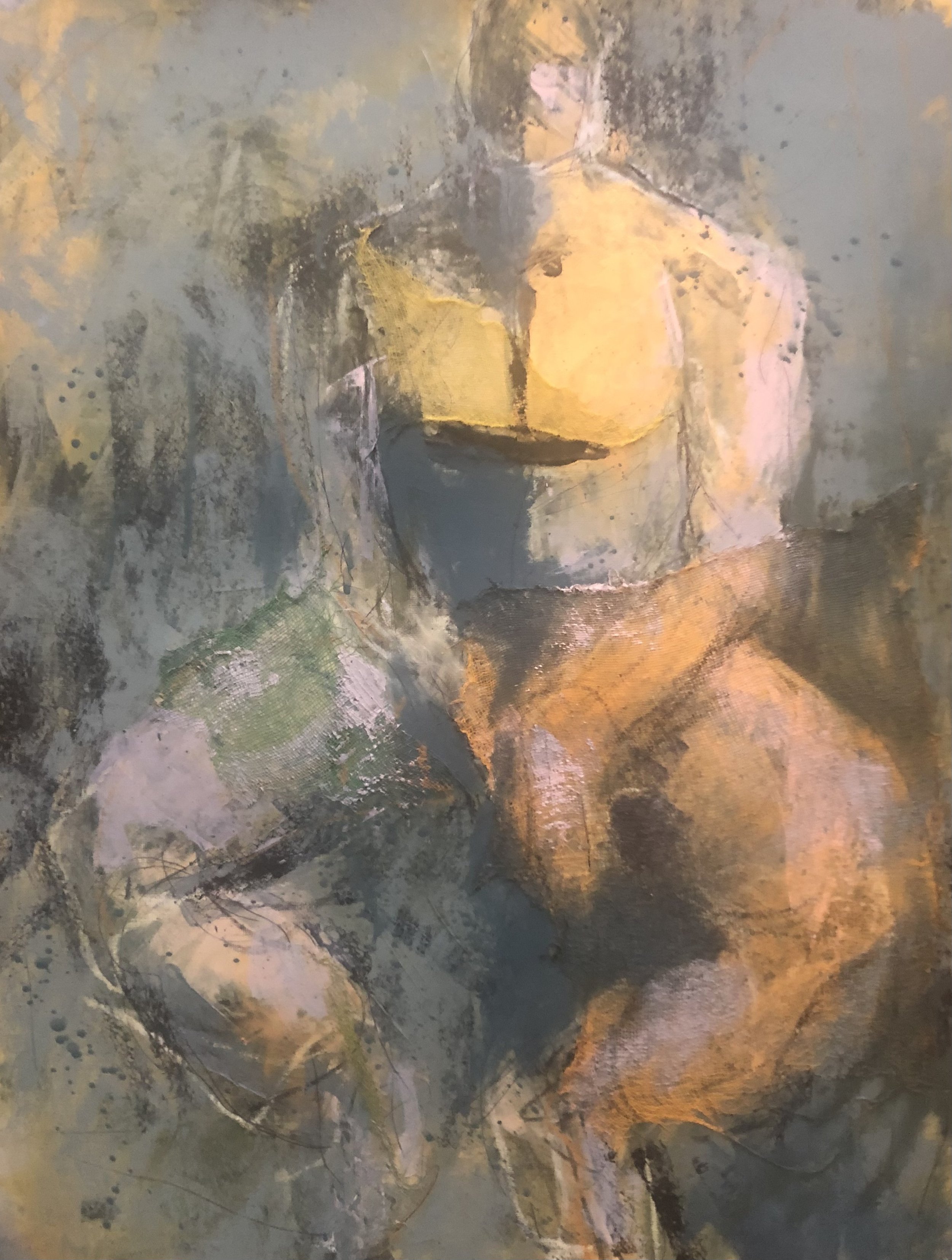Shower journal.
I finished my course in the fall and I was trying to “plan” where to go next. I decided that keeping a journal might help. Well, the journal became the thing I would spend all my time at the studio doing. I got hooked on taping out four sections on a page, painting an abstract piece with a limited palette (two colors and black and white - mostly) and just playing around until I took off the tape, had four little paintings and then practice my “editing” skills to see if I could improve what had been painted randomly/intuitively. Then I’d write about what I liked or didn’t and what I thought I was trying to express. All good work for an artist to do.
And somewhere in all that I got my inspiration from the morning shower because what better place to have random thoughts. So here is a first sample of some of the “best” from the journal keeping in mind composition and value (light and dark). Where does my eye go? What do I see?
It’s all in service of developing my visual vocabulary.









